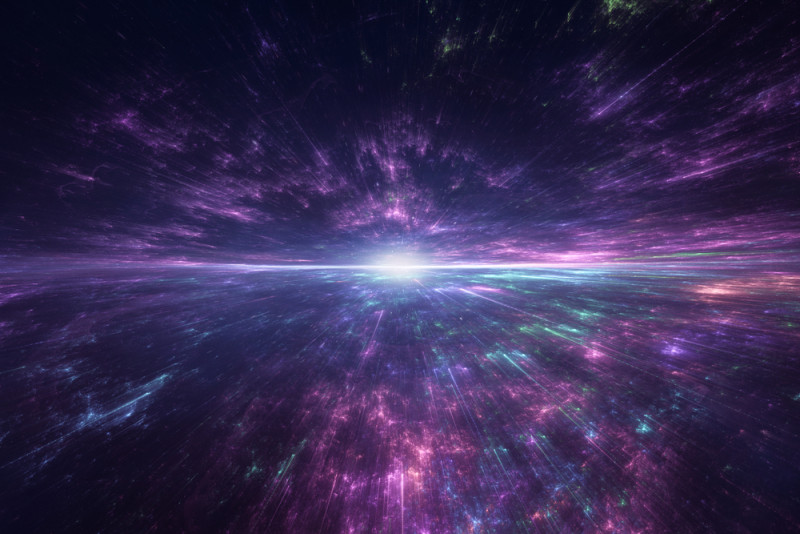Read why this happens
This article is about astrophysics, so we are talking about the destruction of celestial objects (including the Sun), which provide us with the energy that is vital for life.
The stars are the battlefield of two great enemies: pressure and gravity. Each of them is looking for allies. And, often, in the end, there is a clear winner.
Although comparisons are always odious, they often help to understand the problem. Imagine a balloon. The walls of the balloon prevent air from entering. You must blow hard so that the pressure of the new air overcomes the balloon’s resistance to deformation and inflates. If we leave the balloon loose, the air pressure inside it tries to equalize with the outside pressure, causing it to deflate.
We can compare a balloon with a star. Analogous to the latex walls compressing the balloon is gravity, which tends to cause the matter to concentrate. As volume decreases, density increases. In a star, this matter is gas, mainly hydrogen, as “El Pais” writes.
When a gas is compressed, its temperature and pressure increase. Just like the air we put into a balloon, a star’s gas—with its pressure—tends to expand the star. There, we have the two antagonists: gravity tends to make everything fall toward the center of the star, while pressure tends to make the gas disperse. And, in this great battle, the star spends its entire life—including the stage before its birth—in a gradual process of death and destruction. It all depends on whether pressure can counteract gravity.
Before a star is born, gravity wins. It is stronger than gas pressure because star-forming gas clouds begin their evolution at temperatures as low as -418 degrees (compared to the Sun’s temperature of about 10,000 Fahrenheit). But clouds are compressed and heated. Temperature and pressure increase and this could counteract gravity. However, gravity seeks an ally: light! The hot gas emits light, while this energy – transferred by emission – cools the gas. Then the collapse continues.
Depending on the size of a cloud, temperatures can become so high in the center during collapse that they cause hydrogen atoms to collide with each other. By understanding that temperature is the physical property that tells us how fast gas particles are moving, it becomes clear that hydrogen atoms (actually just protons) end up overcoming their electrical repulsion, fusing to form the nuclei of the heavier elements. A star is born, with a core that hosts nuclear fusion.
First of all, helium is formed (though not directly). Nuclear fusion produces energy and, thanks to this extra energy received by the gas of the star, the pressure of the gas eventually balances with gravity. Hence, the star becomes stable. Gravity plus light ends up pitted against pressure and fusion. But not forever: contenders tire. In any case, the Sun has been in this equilibrium for 4.5 billion years. We are still a long way from its destruction.
When the hydrogen at the center of the star runs out, or when one of the allies fails, gravity takes over again and the star destabilizes. This will eventually cause it to be destroyed… but not before going through stages where other elements are produced through fusion.
In very large stars – 10 or even 100 times larger than the Sun – the amount of material is so great, and the gravitational collapse occurs with such intensity, that their cores reach very high temperatures. Fusion then takes place. It is produced at a much faster rate than in the Sun.
We are missing one more form of destruction: bad company… There are stars who don’t live with the right people. And, surprisingly, those who seem most dangerous are not always those who manage to destroy their companions. In the celestial context, we can see two examples of this fact.
Almost a year ago, an object was spotted that had suddenly changed its brightness. Subsequent observations through X-rays, radio waves, and the optical spectrum revealed that it was a black hole that had swallowed a star. A spectacular death because he hung out with the wrong person!
The last example is less expected: a normal star, destroyed because it was too kind. A star can be annihilated because it has given some of its matter to a small companion—such as a white dwarf or neutron star—in such a way that the “small companion” is so destabilized that it explodes as a supernova, taking with it his generous companion…
Source :Skai
I am Terrance Carlson, author at News Bulletin 247. I mostly cover technology news and I have been working in this field for a long time. I have a lot of experience and I am highly knowledgeable in this area. I am a very reliable source of information and I always make sure to provide accurate news to my readers.











